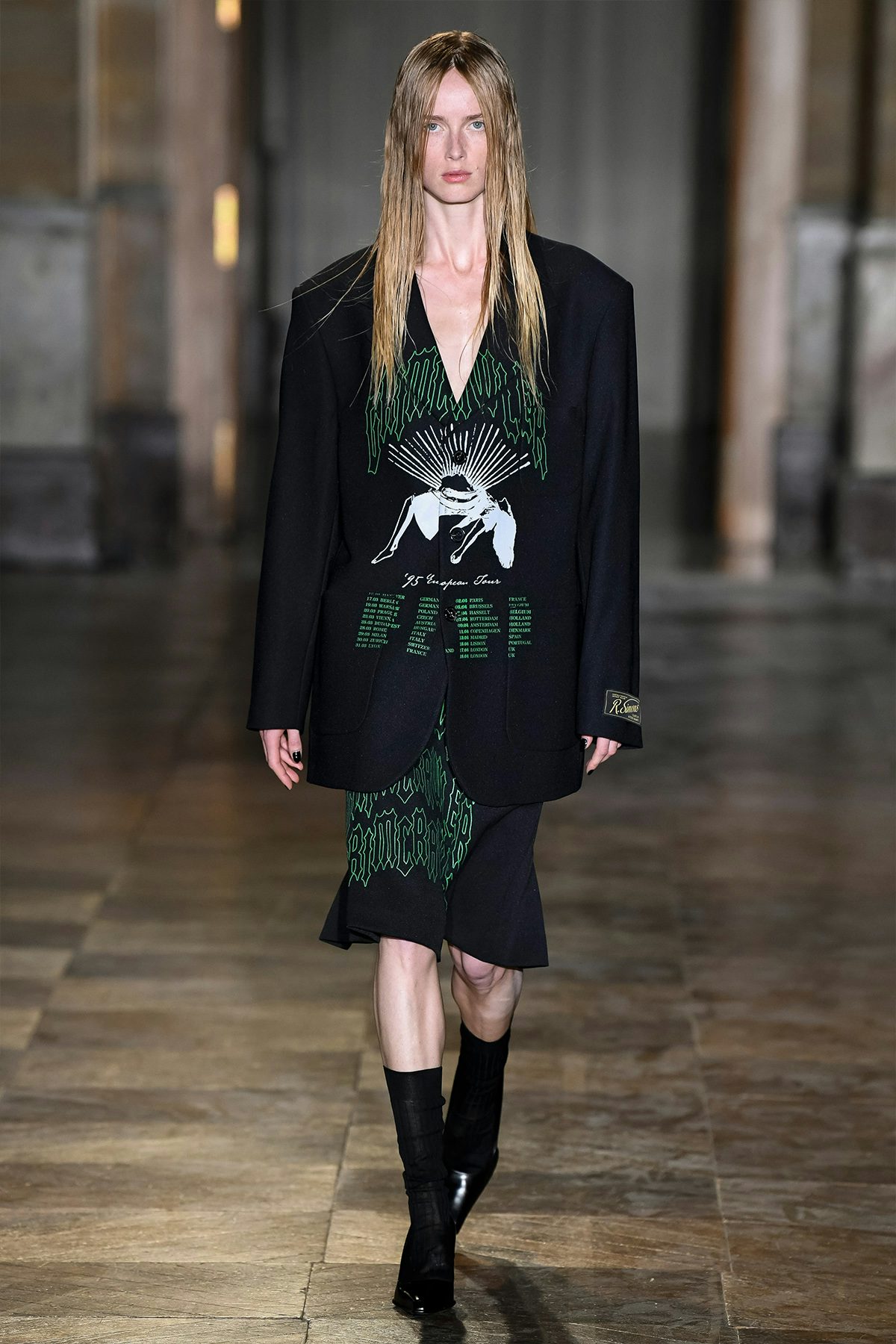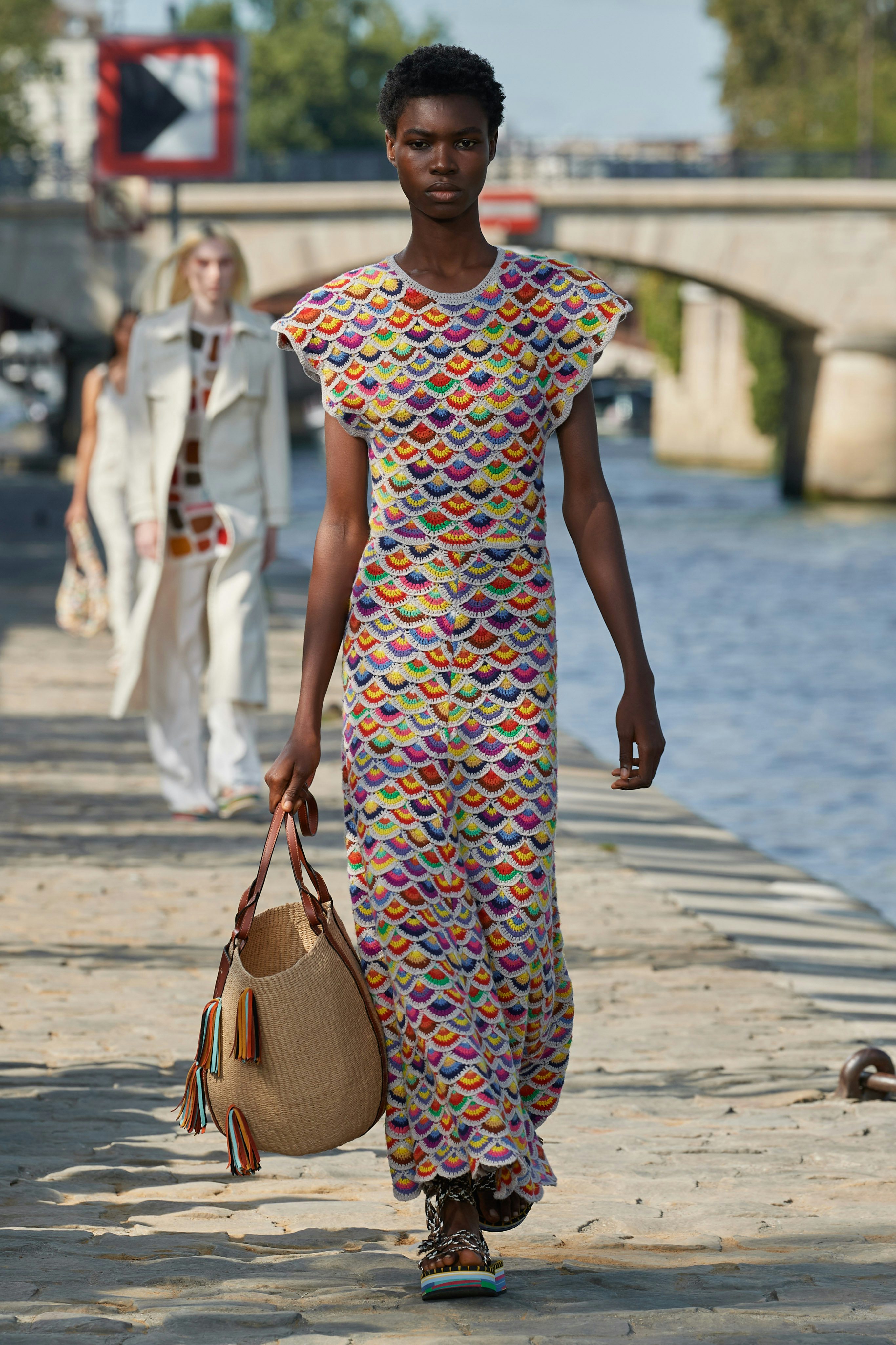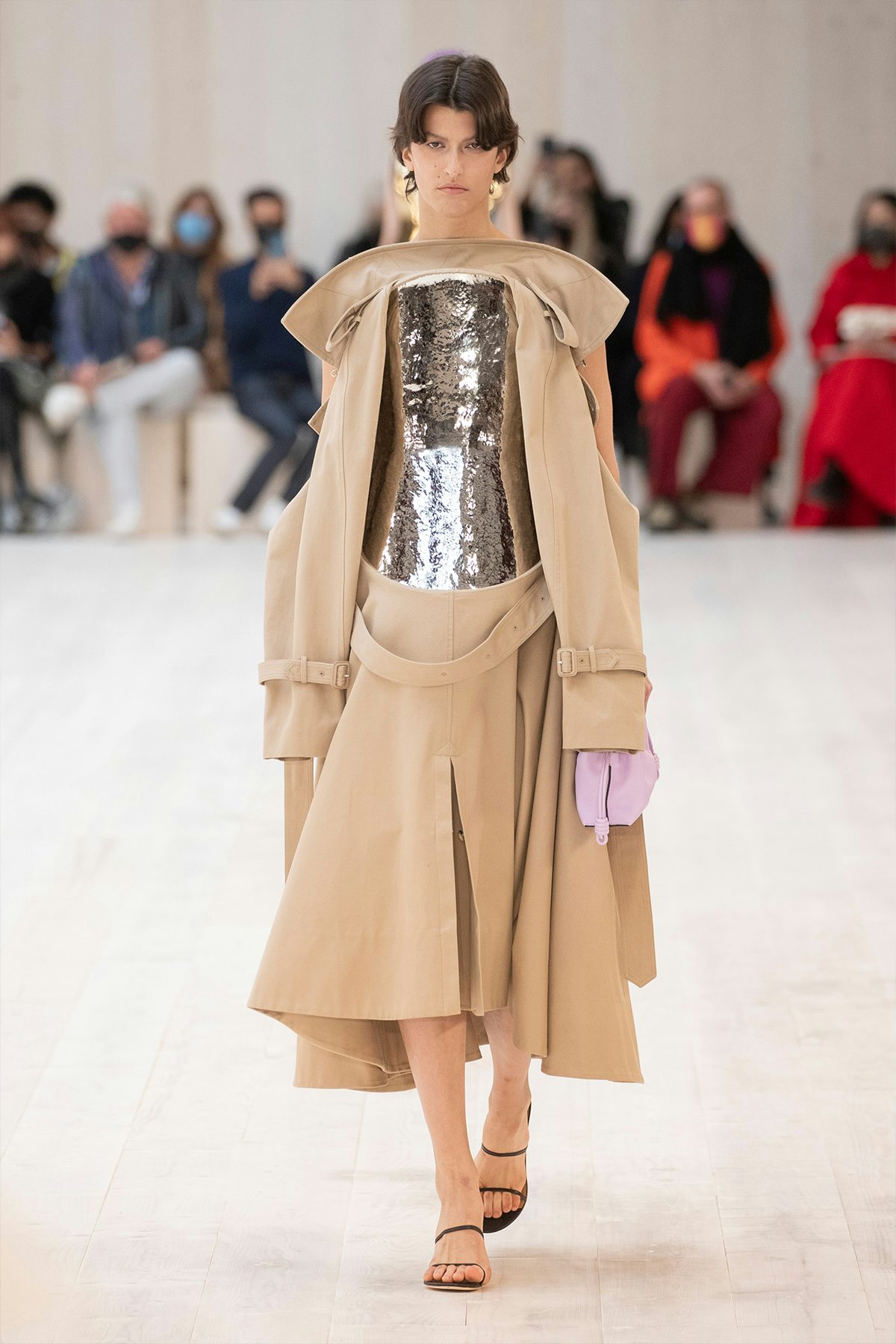Back in Paris, the Stories Fashion Tells
PARIS — Until this week, March 3, 2020 was the last time I saw a live fashion show. For various reasons, I’d reconciled myself with the idea that it would never happen again, so a couple of days spent watching physical presentations in Paris feels almost like a strange twist of fate, made more so by the sense of how little has changed, for all our protestations to the contrary a year ago. But it is a pleasure to see designers expressing themselves — their joys, their obsessions, their foibles — in the living, breathing flesh. Fashion as autobiography: it’s my own obsession. And these three collections allowed me to read their creators like a book.
It’s hard to swerve Raf Simons’ formative years in his work. As he circumvents a dream job at Prada, he dove back into his past for his own label: school uniforms, business uniforms and banker’s stripes, band T-shirts. The Simons tribe has widened. His isolated heroes are matched by heroines. He claimed 70 to 80 percent of his new collection was ungendered: exactly the same blazers, kick-pleated skirts, knitwear and smocks for his boys and girls. They could have stepped straight off a canvas by Steven Shearer, a Canadian artist Simons has taken to citing. Footwear was a point of difference — heavy oxfords for the boys, heeled pumps for the girls.
Raf Simons Spring/Summer 2022. Courtesy.
He walloped the idea hard, institutional uniformity edging on monotony. But the story Simons was telling was a big one: life, death, the whole damn thing. A voluminous smock that suggested pregnancy became a mourning robe in another incarnation. Or, “as gender neutral as baby clothing,” he said, brooding on that brief moment in life before social strictures steer the young into channels of controlled behaviour. His subtext seemed to suggest that he was offering ways to subvert the imposed discipline of uniform dressing: exaggerated proportions, unexpected combinations, gender defiance.
He cited the influence of the Brueghels, Elder and Younger, the community in their work, “the specific language of garments.” Which reminded me that he once created a couture collection for Christian Dior under the influence of the Flemish Masters. That’s roots. The show notes quoted Pieter Brueghel the Elder: “Because the world is so faithless, I go my way in mourning.” The thought seemed apposite for the pandemic here and now, with its maniacal polarities, but that scarcely made it any less bleak. And Simons’ show was stark to match, a dark reflection of a dark time, in the monastic contrast of black and white, the monochrome severity of the clothes, even the dystopian tinge of the band names — RESILENCER, TRANSONIZER, TECHNODOMER — silkscreened in neon on strict black blazers and skirts. Simons called it, “Treating tailoring like a T-shirt.” There’s an idea which might have legs.
The show’s signal styling flourishes were the skeletal metal hands which clasped sleeves like a garter. A memento mori: in life there is death. Simons has always exalted youth and, in that celebration, indirectly mourned its transience. So one line of copy on his show notes blared off the page. “Youth is wasted on the young.” Maybe not so much a change of heart as a recognition of how much tougher times are for Simons’ tribe.
Gabriela Hearst was radiant with energy after her Chloé show. “It’s not my show, it’s our show, because it takes a lot of people to make this,” she said, as she ticked off the seven NGO’s who had contributed. A women’s co-op in Paris made the bricks the audience’s seating rested on. The seashells came from Madagascar, the bags from Kenya, the flipflops compressed from other flipflops extracted from the ocean by Ocean Sole, also in Kenya. Such commitments are scarcely new for Hearst, but her platform is bigger at Chloé. “In 2021, if you’re not in survival mode, not fighting for your life, you need to help, and the bigger your platform, the more you have to help.”
Chloé Spring/Summer 2022. Courtesy.
Paris has expanded Hearst’s thinking in other ways. She insists it’s opened her eyes to the industrialisation of fashion. Her response is Chloé Craft, signed by a spiral logo that guarantees a piece is 100 percent handmade. She pointed to the patchworked leathers, and a dress composed entirely of petals of colourful crochet as obvious examples. Other equally striking pieces — the mélanges of suede and macramé, for instance — were not, because the macramé was machine-made. Hearst visualises Chloé Craft at the top of a pyramid whose base is “the volume drivers, which you have to turn around really quickly for less impact on the environment.” Like the cotton totes or the sneakers. “Whatever you’re doing a lot of, you have to lower it,” she said. The once-cotton totes are now linen. The production of the sneakers uses 85 percent less water.
The Chloé girl in her most recent incarnations has often been tagged as a free-spirited festival goer. There is still something of that spirit in Hearst’s designs — the shell-studded harnesses, the fringes, the talismans on streaming ribbons — but the languid poetry of flowing silk dresses was matched by the hardiness which is equally her signature, like the long whipstitched leather trench, or the grommeted leather tunic. There was only one poncho this time, but it will always feel to me like the piece that is closest to Uruguay-born Hearst’s heart. Roots again.
A trench coat was also a star piece in the Loewe show. Worn back to front, inserted with a gilded metal breastplate, it came near enough to the beginning of the presentation to confirm the surrealist thrust of Jonathan Anderson’s collection, one of his best to date for the Spanish brand. If the Dali-esque breastplates weren’t enough, the shoes heeled with candles, lipsticks, nail polishes, a shattered egg and a single red rose reinforced the idea of the readymade that was Anderson’s earliest flash of inspiration.
Loewe Spring/Summer 2022. Courtesy.
They were also reminders that Surrealism and its bratty big brother Dadaism (that shattered egg shoe was a Dada gem) evolved as a reaction to the senselessness of World War I. A cataclysm of another kind has just wracked the planet, but, as Paris Fashion Week returns to live shows, the curious sense of stasis did feel surreal. That thought weighed heavy on Anderson as he debated himself: to show or not to show? “I did this job because I wanted to make things, and I wanted to experiment,” he said the night before his presentation. “I make fashion, I’m not here to just do a show, it has to be something. I’m not going to send out T-shirts.”
But any trace of self-doubt was erased by his supremely confident showing. Anderson’s love of artisanally crafted objects is well-documented. They’ve been fundamental to his work at Loewe. Here, however, there was a shift. “I was getting bored with the idea of myself liking a basket,” he said wryly. This time he built from the ground up, from those heels, rather than the bags. Some models carried wax pots, others had a purse made from a deep red teddybear fur from the 1920s that Steiff recreated for him (a ready-remade?). The compostible sneakers deserve a mention too.
Anderson’s thought processes have a naturally surrealistic bent anyway. He managed to abstract an 1528 Florentine altarpiece by Jacopo Pontormo into a multi-coloured psychedelic leitmotif. The swoops and whorls of plaster cornicing informed dresses of a beautiful, almost Delphic draping. A tracksuit blew up in a taffeta bubble. Black floor-length dresses were mutated by metal underlays. They subliminally evoked Rei Kawakubo’s famous “lumps and bumps”, except these were “prongs and spikes” for a more neurotic era. Perfect!
While Anderson was working on a documentary on Pontormo, his collaborator from the BBC actually described the altarpiece as “neurotic, psychedelic and completely hysterical.” Anderson loved that. Those words became his touchstones for the collection. A new show venue meant he wasn’t able to curate the environment that has always been such a part of his live experience. But a huge empty space seemed to make his clothes that much more impactful. Maybe Anderson would call them hysterical, though the key to it all was, he claimed, that he didn’t “overthink” anything. “Before the pandemic, I was starting to get bogged down in historical and multifaceted looks. Each look had to be different. This time, I thought it was fine to show an idea four times, because it was a good idea. I’d rather see an idea than shopping.” And never more than now!
Related Articles:
Inside Gabriela Hearst’s New Chloé
At Raf Simons, Children of the Coronavirus
Jonathan Anderson’s Radical Fashion Experiment Is Over (Almost)




